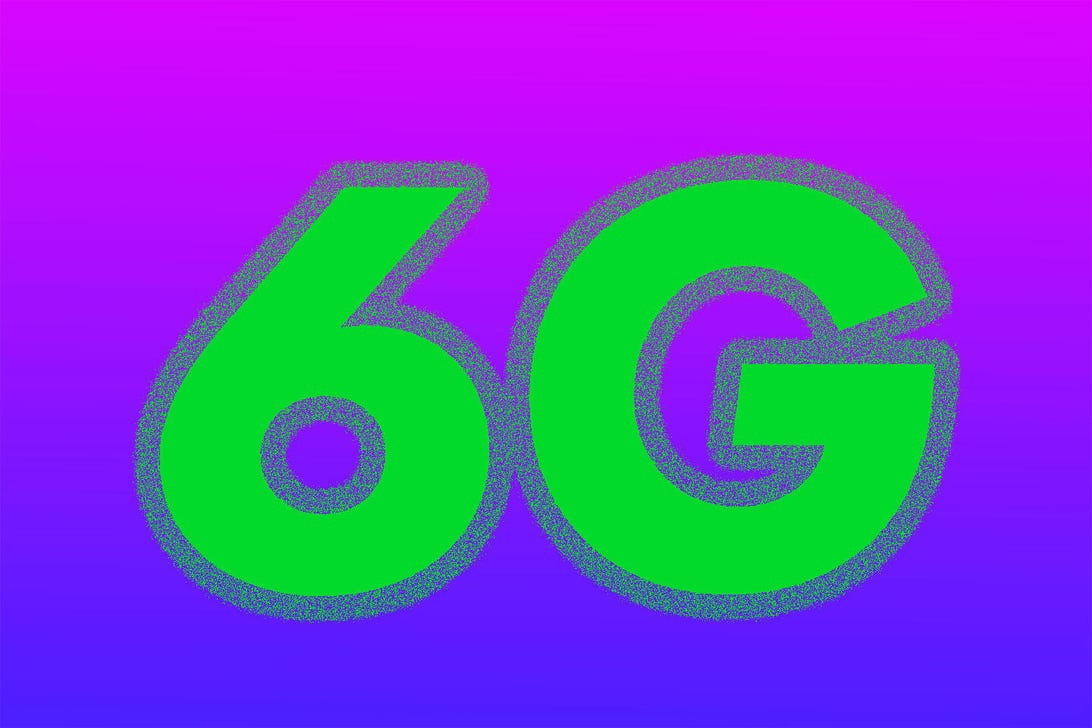
Carriers around the world have launched their 5G networks. Nationwide coverage is available in the US from the big three providers. Compatible smartphones are getting cheaper. The next-generation wireless technology is rapidly maturing.
So let's talk about the next-next-generation wireless technology. Yes, 6G.
Each wireless generation lasts about a decade, so 6G is a long, long way from becoming reality. Maybe in 2029 we'll get a hint of a deployment. Still, it's worth considering the technology that will be around the next corner and looking at what wireless researchers are thinking about in terms of its potential.
5G won't stand still as 6G is developed. As wireless executives convened (virtually) at the Mobile World Congress conference this week, a separate group of researchers from hundreds of companies representing the 3GPP standard-setting body met to talk about 5G Advanced, a marketing buzzword coming to a commercial near you.
Attending that discussion was Tingfang Ji, senior director of engineering at Qualcomm and one of the lead 5G researchers at the company. Ji, who holds more than 800 patents at Qualcomm, offered some insight into what both 5G Advanced and 6G technology might look like.
6G will sense your environment
It's worth looking back before looking to the future. The move to 4G saw a big boost in speed. Now 5G offers greater connectivity for multiple devices, as well as breakneck speeds, particularly in city centers like Times Square and arenas such as football stadiums. While 6G will undoubtedly bring even higher speeds, a key benefit will be using those radios to sense your surroundings as well as to ferry information.
There's already work on this in 5G, with the phone's radio acting like a GPS device to figure out your location. With 6G, your phone will be able to figure out the devices around you, serving as a bridge between the physical and digital worlds. Those nifty augmented reality demos -- the ones that feature digital menus popping up on your eyeglasses screen when you look at a restaurant -- could materialize with 6G.
Apple already uses Bluetooth embedded in its network of devices to let people track objects with its AirTags. But Ji says the 6G experience will be more like radar, allowing for more interaction between devices.
"You can actually sense the environment, so it should be more powerful," Ji said.
With 6G, the industry is looking to expand into new bands of spectrum. Wireless carriers embraced gigahertz frequencies, which offer you a huge amount of speeds -- comparable to a speedy fiber landline connection -- but limited range. Ji said they were looking at terahertz spectrum, which operates at a frequency that's 1,000 times faster than gigahertz (which itself is 1,000 times faster than a megahertz).
It's important to note that frequency doesn't exactly correspond to speed, but it gives you a sense of how much more capacity you could get with 6G.
The next-next-generation technology could also solve the dilemma that gigahertz spectrum faces now. It could potentially offer both higher capacity and wider range in a best-of-both-worlds scenario.
"There will be some fundamental technology we will want to introduce to overcome that," he said. "It's something we're working on that's super exciting."
What is 5G Advanced?
Work on 6G is just getting started. Right now, it's little more than a collection of ideas and goals. More concrete is the prospect of 5G Advanced, an upgraded version of 5G that could come in the next two and a half years.
While no one knows for sure what it will consist of, there's industry movement to clarify the picture. At their meeting, researchers under the 3GPP group debated what improvements the industry should focus on.
"5G Advanced gives us a second chance to look at the fundamental tradeoffs inside 5G," Ji said.
There are 50 areas that researchers are looking at, but they will likely get narrowed to about 20, he added.
Qualcomm has proposed integrating machine learning into 5G and for the networks to better handle internet of things devices. It's also proposing to use full duplex radios, in which both sides can communicate with each other simultaneously. (Typically, it's one-way traffic.)
"There's a wide area where we can make a substantial boost to the technology," Ji said.
The 3GPP organization counts 700 companies, including Apple, Google and Huawei, so what Qualcomm is proposing may not be what the industry focuses on.
Again, this is technology that isn't going to show up in your phone for a while, so no need to hold off on that upgrade for 5G Advanced. And 6G, despite a sense of where it may go, is barely on the map.
See also: Best 5G phones for 2021
Article From & Read More ( Never mind 5G. This is what 6G could look like - CNET )https://ift.tt/3AlmbXO
Technology

No comments:
Post a Comment